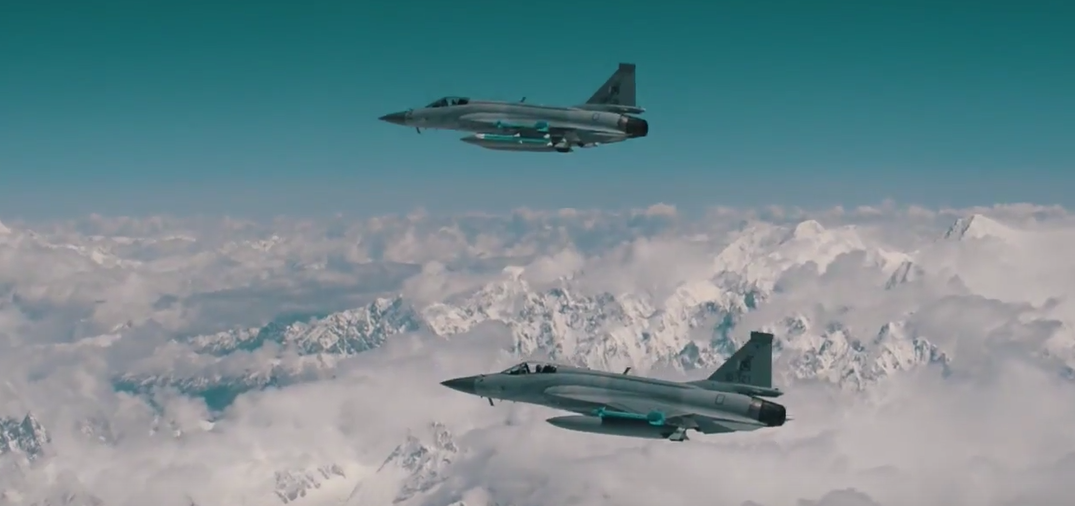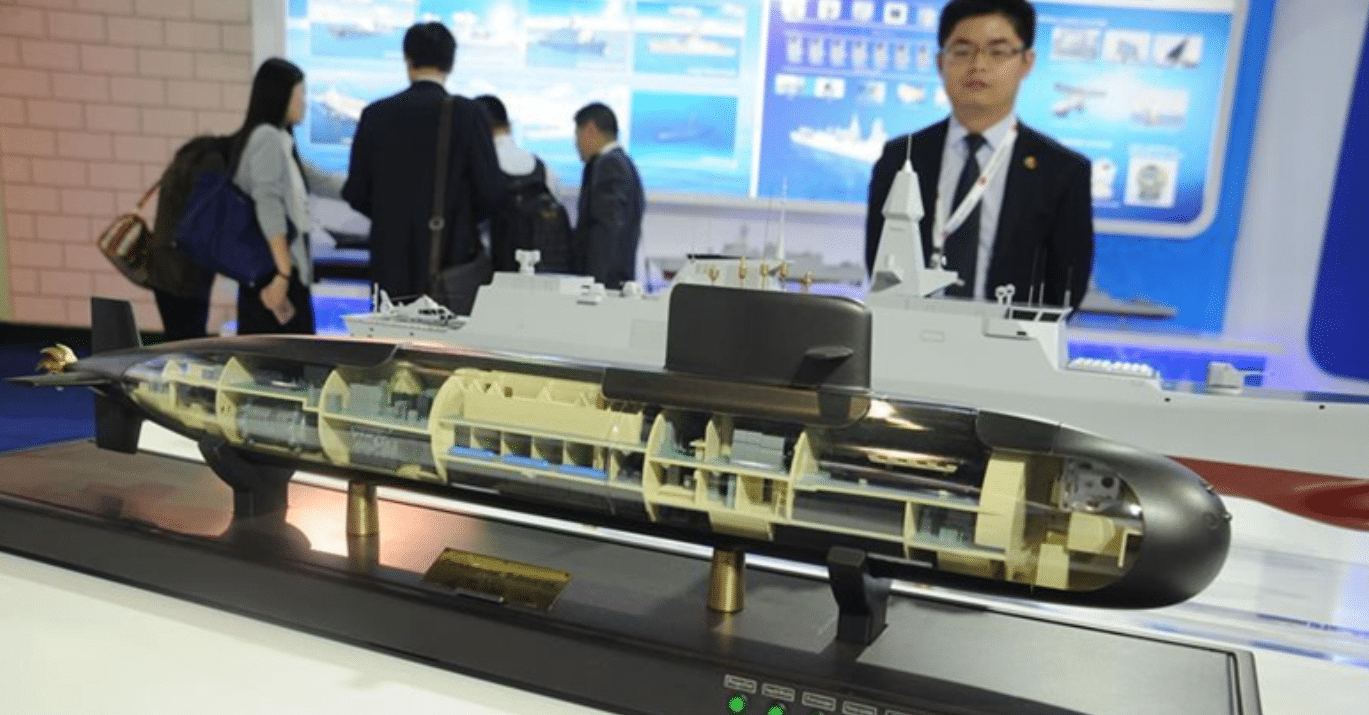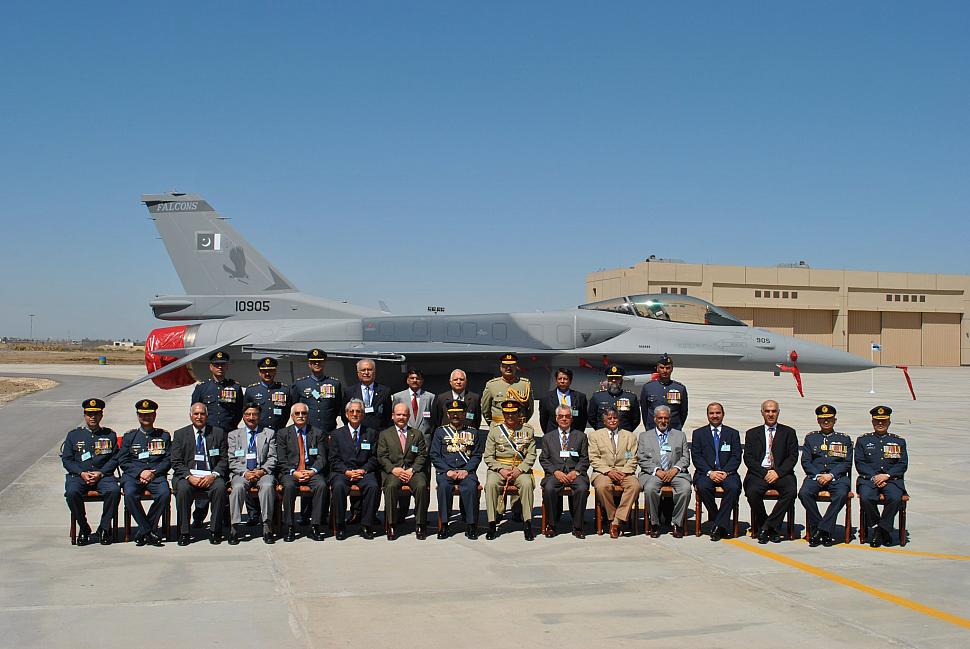2307Views 23Comments

Pakistan inches closer to JF-17 Block-III
In 2017, the Pakistan Air Force (PAF) is expected to order the Block-III variant of the JF-17, which is co-produced by Pakistan Aeronautical Complex (PAC) and the Aviation Industry Corporation of China (AVIC). It seems that specific details regarding the JF-17 Block-III’s subsystems and design attributes are emerging, and the forthcoming JF-17B, the dual-seat variant of the Thunder, could inform much of it.
The JF-17 Block-III is the first major update of the Thunder, a lightweight multi-role fighter positioned as a cost-effective successor to legacy Cold War-era combat aircraft, such as the MiG-21, Mirage III/5, F-7, F-5 Tiger II and others. Currently, the PAF has more than 70 JF-17 Block-I and Block-II fighters, which are in service with five fighter units – four squadrons and a training unit at the PAF Combat Commanders School.
In 2015, the PAF revealed that the JF-17 Block-III would be equipped with an active electronically-scanned array (AESA) radar, helmet-mounted display and sight (HMD/S) system, updated avionics and electronic warfare (EW) and electronic countermeasures (ECM) systems, and potentially an infrared search and track (IRST) system (see: “Major changes ahead on JF-17 Block-III” for an understanding of how an AESA radar, HMD/S, etc, would improve the JF-17). However, specific details regarding the airframe and engine were not provided, leaving observers curious as to how the Thunder would manage the requisite cooling and weight requirements of the new subsystems, especially the AESA radar.
However, the dual-seat JF-17B might have incorporated those critical airframe changes. Alan Warnes (via AirForces Monthly) reports that the JF-17B has a taller tail, a larger nose and new internal spaces for fuel (to compensate for the space lost from the second seat). The JF-17B’s tail houses components for a new three-axis fly-by-wire (FBW) system. The larger nose was designed for an AESA radar (though the initial builds of the JF-17B will be equipped with the KLJ-7). If one factors out the second-seat, the single-seat JF-17 Block-III could possibly retain the JF-17B’s added internal fuel space.
It is not known if the JF-17B and/or JF-17 Block-III will incorporate a higher proportion of composites, which would help with reducing the weight of the airframe. At the 2016 Defence Services Asia exhibition, PAF officials had told IHS Jane’s that PAC was exploring new engines for the JF-17. The RD-33MK and WS-13 were cited as the leading options. The RD-33MK is marginally heavier than the RD-93 (dry weight: 1,099 kg vs. 1,055 kg) but has a higher afterburning thrust output (9,000 kgf vs. 8,300 kgf). There are clear thrust-to-weight ratio gains to be had, but it is not known if the PAF will pursue them with the Block-III.
Cost, regulatory ease and technical compatibility with existing weapons will likely push the PAF to select a Chinese AESA radar for the Block-III. The Nanjing Research Institute of Electronics Technology (NRIET) KLJ-7A reportedly promises a range of 170 km for targets with a radar cross-section (RCS) of 5 m2 and capacity to track and engage 15 and 4 targets, respectively (East West Pendulum). Pakistan will likely sole-source the EW/ECM as well, which would ideally use active phased-array transceiver modules (TRM).
The HMD/S-selection and inclusion of IRST are not known. At Air Show China 2016, AVIC displayed what appeared to be an HMD/S concept, but it has yet to showcase a marketable HMD/S product. The HMD/S market is confined to a handful of suppliers, with Elbit, BAE Systems and Thales accounting for practically all fighter-use HMD/S systems outside of Russia. Regarding IRST. It is possible, though unconfirmed, that the enlarged nose could potentially have room for an integrated IRST system. Otherwise, the PAF could dedicate a specialist hardpoint on the airframe for special mission equipment, be it IRST, targeting pods or EW/ECM pods.
Assuming PAC and CAC succeed in pushing the JF-17 Block-III into production from 2019, the 2020s should amount to an eventful period for the PAF. Unless the PAF secures another platform, the JF-17 Block-III is basically the PAF’s next qualitative driver, introducing contemporary technologies – such as AESA radars – to the fighter fleet.



23 Comments
by Shershahsuri
PAF should speed up the development of JF-17 Block 3 as India will start receiving Rafales from 2018. Alongside Pakistan govt should also push for V-upgrade for F-16.
by Sami Shahid
PAC should look for a Mach 1.8 engine for JF-17 block 3. Long range targeting pods are also very important and I hope PAF has really bought 16 from Turkey. HMD and AESA radar are also very important to counter threat of Indian Rafale jets. Anyway, seems like Pakistan has stalled its plan to buy new F-16’s or any other aircraft.
by truthseeka
Its a great achievement and a great start for a small country like Pakistan, but frankly this design does not look very stealthy… just my 2 cents.
by Shafiq
With no off shelf fighter jets like Su 35 or new build F 16s will PAF be able to maintain a parity with Indian Air Force especially to counter heavy weights like Rafale
by bill
The economy and effective counter abilities to challenge next gen jets like Rafael or up coming jets can’t be achieved simultaneously. Pak/PAF should equip JF17 block-III with high tech gadgets to counter any capable jet of 4.5+ gen. I have read on net and facts point out that Vixen E 1000 offered to Pak with IRST has range of up to 200KM backed by the experience of a matured supplier. Meanwhile Chinese are new in this field.
by yas
I would say pak must have made good achievement that’s why the news is on.i wish we all pakistanis can help pak airforce financialy so they choose the best equipment.opposition must be moaning.
by yas
Stealthy is not an issue with thunder right now.there is j31 for stealthy.pak has an eye on it.
by yas
Thunder has got good range.they can go deep inside and come back.number of thunder counts at this very moment to replace old air crafts having lower range.
by MT
thunder air combat range wont be a Km more than 500. What we read on wiki and other forums is hubris.
by SP
A new airframe, built in house with capabilities never seen before by its airforce is a potent arsenal.
The key is to continously keep upgrading it by having a lighter airframe, better engine, better avionics and more lethal weapons.
As the aircraft matures and evolves, it will become much better and a more potent weapon. It will remain the mainstay and the workhorse of the airforce for the next couple of decades.
by Chien Li
Is WS-13E a good candidate to replace RD-33MK?
by Aamir
Looking forward to see if they have enlarged the nose cone to house the new radar.
by Zill e Hussnain
do you have any evidence to back ur argument?
by nob hamid gul
Yeah and it would be great if Paf opt for Chinese engine over the Russian. This will maintain secrecy of capability.
by Ali Ahmed
Long live Pakistan China friendship and brotherhood.
by SYED
ITS A MARATHON NOT A SPRINT…….having said that PAF is going at the top gear….and leaving enemies in the dust
by Superior Shakeel
Or skyrocket the crash rate or have you not been aware of the J-10s dropping out of the skies like seagulls
The Chinese engine are heck a unreliable despite their hiding it completely many have crashed in populated zone thus made it to news
There is still some ways before they have reliable enough engine as Russians let alone west.
It’s a single engine plane not worth the risk.
by nob hamid gul
Have u not aware of the crash rate of your sukhoi 30mki?
by Steve
There is a natural limit to how much JF17 can evolve. It was supposed to a replacement for our mirages, F7 etc. We need to be looking at J31 for long term and an interim 4-4.5 gen fighter immediately for numbers. I am sure PAF are looking 🙂
by MT
discussion of thunder combat radius on wiki.
by Zill e Hussnain
would u be kind enough to put forward some form of technical details for analysis instead of making such vague claims?
by Khan
The Chinese J20 puts the Indian Rafale in the shadow, Best for Pakistan.
by Eagle Force
Sirf Manjan chal rhay hein… even PAF does not know the actual date for New JF-17 blunder block3 launching date… India and Pakistan are making fool from their elected members